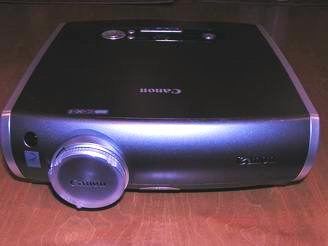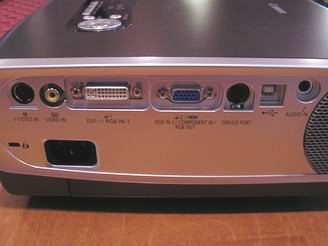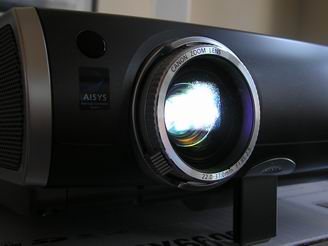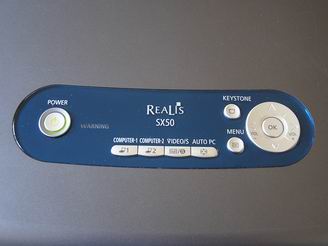Before I go further, here's a link to a overview of SXGA+ LCD and LCOS projectors, who purchases them, and why, and where that market is going. However, in summary, many laptops today are now higher resolution than XGA (1024x768), and, also, there are many applications calling for the highest possible resolution projectors. They include: displaying engineering and architectural drawings and designs, medical imaging, scientific modeling, command and control and mapping.
And that brings us to Canon's new SX50, which just started shipping (July 05). The SX50 is a striking departure from most of the SXGA+ competition, in several ways:
- By far, the least expensive (Suggested retail: $4999) by at least $2000.
- A true "personal" portable (8.6 lbs.), not the first - DPI's iVision SX+ is actually a bit smaller and lighter - at 6.5 lbs, but has a list price of $13995!
- The SX50 projector uses LCOS technology, not DLP or LCD. It uses 3 LCOS panels so no spinning color wheels or "rainbow" effects as found with the DLP hi resolution projectors
Let's take the Physical Tour of Canon's SX50 SXGA+ projector.
From the front. The first thing you notice is that the Canon SX50 projector is actually rather attractive for a business projector. With case that is mostly dark gray, it has silver sides, a bluish control panel and curved lines, it looks more like a stylish home theater projector than a boxy business model.
From the front: As you look facing the projector, the lens is mounted off center near the left side. The lens housing sticks out slightly with focus and zoom rings, so its not quite recessed for protection against bumps, but it does only protrude by about a 1/2 inch, making it a hard target. The zoom lens of this Canon projector offers a range of 1.7x, far more flexibility than found on most sub-10 lb. projectors, and making placement (or mounting) easy. Right next to the lens is an IR sensor for the remote, and in the center by the bottom is a large push release for the front center foot. (Note: The Canon SX50 relies on a three point system for stable balance. In addition to the adjustable front center foot, there are two back feet, the one on the left bottom (if you are facing the projector) is also adjustable, assuring you a level setup, even on uneven surfaces.
A very nice control panel is located on the top of Canon's SX50 projector. A row of source buttons are located between the Power button, and the Menu and control pad on the right. There are separate source buttons for Computer 1 and Computer 2. Computer 1 takes a DVI-I input and supports either Analog or digital inputs. Computer 2 can handle a 2nd analog (RGB data) or component video). A single button next to those two, lets you toggle between composite video, and S-video. The fourth button is the auto adjust (Auto PC), to make sure the projector has properly locked on to the signal.
A keystone button and Menu button are next, and then the control pad. When NOT in menu mode, the left and right arrows control volume. In menu mode all four arrows allow you to navigate the projector's menus. An "OK" (enter) button is in the center of the pad.
There's nothing on the back of the projector, as all inputs are located on the left (if you are facing the projector). Near the front on that side is the single 1 watt speaker.





